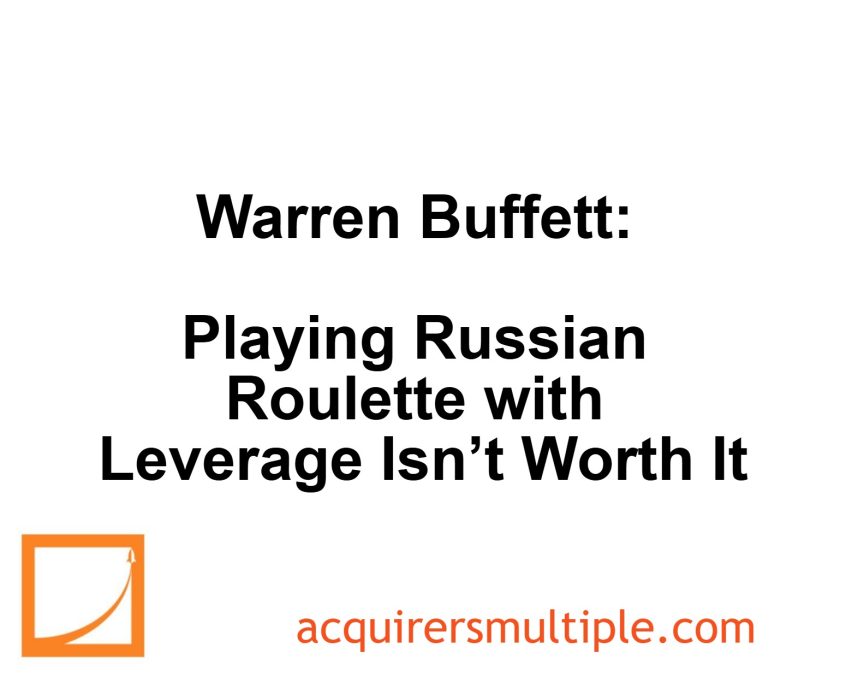During the 1999 Berkshire Hathaway Annual Meeting, Warren Buffett discussed Berkshire Hathaway’s caution against excessive borrowing, explaining that while moderate debt might have increased their wealth, substantial borrowing could have led to trouble.
He highlights how many intelligent investors consistently use risky, leveraged instruments, especially with others’ money. Buffett references the Long-Term Capital Management (LTCM) crisis, where derivatives allowed investors to bypass standard margin requirements, creating highly leveraged positions without upfront capital.
Though derivatives can succeed most of the time, the risks aren’t offset by potential gains, likening it to Russian roulette. Buffett warns that such practices, though profitable temporarily, can ultimately lead to failure.
Here’s an excerpt from the meeting:
Buffett: And as you know, at Berkshire, we’ve never used any real amount of borrowed money. Now, if we’d used somewhat more, you know, we’d be really rich. But if we’d used a whole lot more, we might have gotten in trouble some times.
And there’s just no upside to it, you know? What’s two percentage points more, you know, on a given year, that year?
And run the risk of real failure. But very bright people do it, and they do it consistently, and they will continue to do it. And as long as explosive-type instruments are out there, they will gravitate toward them. And particularly, people will gravitate toward them who have very little to lose, but who are operating with other people’s money.
One of the things, for example, in the LTCM case — and Charlie mentioned it in terms of derivatives — in effect, there were ways found to get around the — and they were legal, obviously — to get around the margin requirements. Because risk arbitrage is a business that Charlie and I have been in for 40 years in one form or another.
And normally, that means putting up the money to buy the stock on the long side and then shorting something against it where you expect a merger or something to happen.
But through derivatives, people have found out how to do that, essentially putting up no money, just by writing a derivative contract on both sides. And there are margin requirements, as you know, that the Fed promulgates that, I believe, still call for 50 percent equity on stock purchases.
But those requirements do not apply if you arrange the transaction in derivative form. So that these billions of dollars of positions in equities, essentially, were being financed a hundred percent by the people who wrote the derivative contracts. And that leads to trouble.
You know, 99 percent of the time it works. But, you know, 83 and a thirds percent of the time, it works to play Russian roulette with one bullet in there and six chambers. But neither 83 1/3 percent or 99 percent is good enough when there is no gain to offset the risk of loss.
You can watch the entire meeting here:
For all the latest news and podcasts, join our free newsletter here.
Don’t forget to check out our FREE Large Cap 1000 – Stock Screener, here at The Acquirer’s Multiple:



